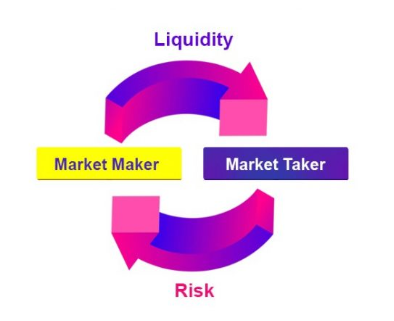
Liquidity is one other very important factor for any money or assets market. It is particularly important that traders of cryptocurrencies understand the dynamics of liquidity within the market.
Liquidity can be simply defined as how quickly an asset can be bought or sold without much effect on this asset’s price stability – so more or less it refers to the ease of conversion or exchange of a cryptocurrency or digital asset for fiat (cash). Fiat has been used as the most common measure of market liquidity because with current global market dynamics, it is the most easily accessible and spendable medium of exchange.
Illiquid assets on the other hand can vary by large margins and require a longer time for transactions to be completely executed either due to lack of adequate buyers or sellers – this will consequently mean that the market lacks cash.
Importance of Market Liquidity
Fair Prices for stakeholders: With large number of buyers and sellers, the market is inclined to be equitable and fairer to participants as there is resultant liquidity or availability of large amount of cash. High trading volume will mean that both buyers and sellers will quote competitive prices to close deals quickly and this will more or less be a win-win for players.
Market Stability: When a market is highly liquid, it is less susceptible to large swings. This is because the market at high liquidity is robust as such large inflows or outflows will only have little impact on asset price points. In an illiquid market, one large buy or sell has a tendency to swing the market greatly.
Fast Transactions: A highly liquid market means that there will be enough buyers and sellers to ensure quick completion of trade transactions. High liquidity means that transaction orders get filled easier and faster whereas with low liquidity, sellers will find it difficult to find buyers to help complete their sell orders and some sellers might be forced to sell at low price points as per the level of need for cash.

Factors that Affect Liquidity
Cryptocurrency market liquidity are affected and influenced by the following denominators;
Trading Volume: This is one major factor that determines market liquidity. The volume of trade in coins exchanged within a 24-hour time-frame on the market by sellers and buyer determine market liquidity. In effect, market volume reflects the market activity of a specific coin or asset. High volume means high liquidity and vice versa.
Number of Cryptocurrency Exchanges Engaged: The higher the number of cryptocurrency exchanges that trade a coin, the higher its volume and subsequent liquidity. When more exchanges list an asset, a resultant increased demand is expected and this will inadvertently lead to high trade frequency and volumes.
Acceptance & Regulation: The more popular a cryptocurrency, the higher its propensity to be accepted by the mass market. Higher acceptability would translate into higher trading volume and increased liquidity. As such it is imperative that most utility crypto tokens take a cue from this to ensure ease-of-use for their project tokens.
Also, favourable regulations regarding a particular asset class would mean lower barrier for mainstream adoption and high adoption rate would not only encourage token use, but also translate into exchange trades and then lead to a highly liquid market.
Share Your Thoughts Below Thanks
Good information provided
Congratulations @crypto-spider! You received a personal award!
You can view your badges on your Steem Board and compare to others on the Steem Ranking
Vote for @Steemitboard as a witness to get one more award and increased upvotes!